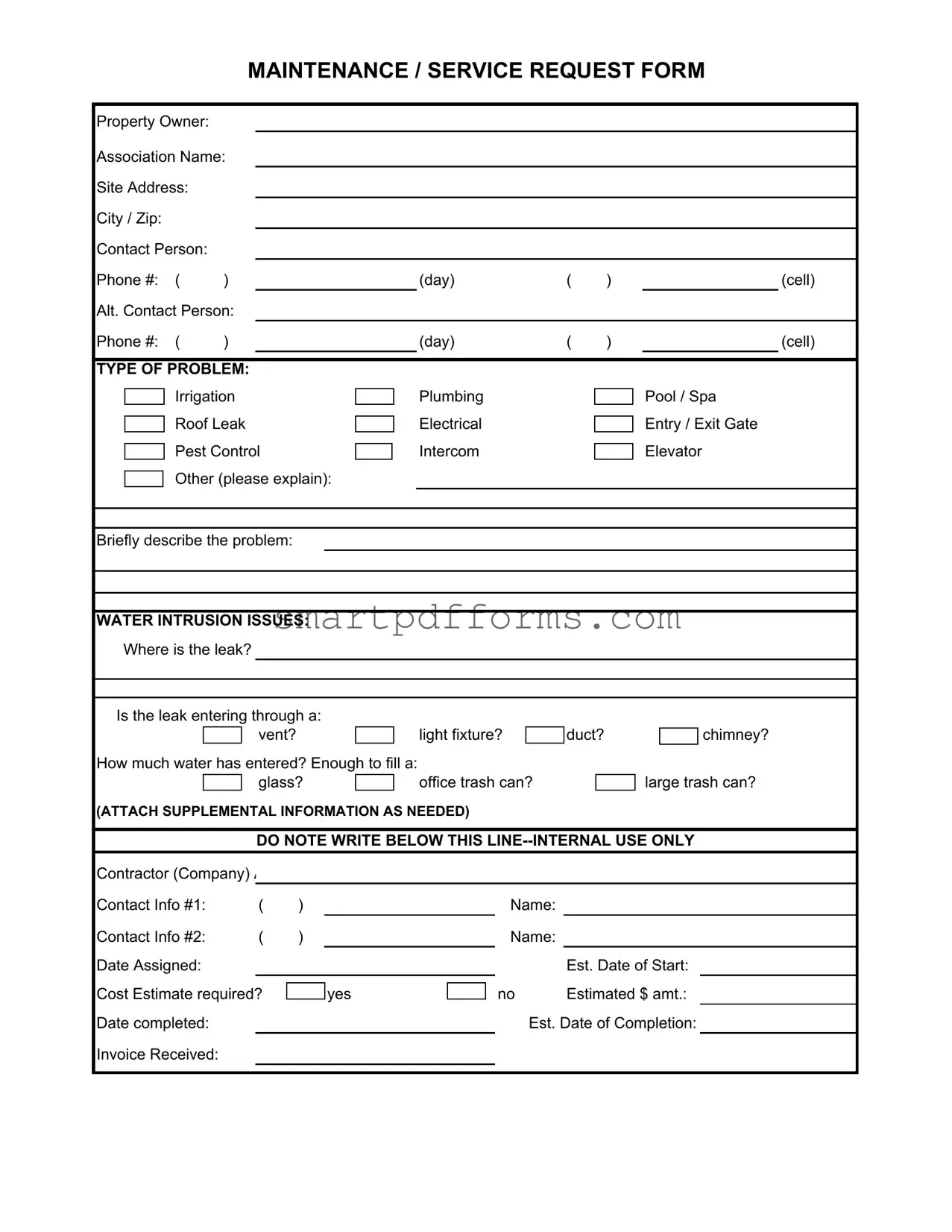Blank Maintenance Request PDF Template
A Maintenance Request Form is a document used to formally request repairs or maintenance for issues like plumbing malfunctions, electrical problems, or any other service needs within a property. It's a critical tool for property owners, associations, or tenants to communicate with maintenance teams, ensuring that physical problems are addressed promptly and efficiently. Click the button below to fill out your Maintenance Request form and take the first step towards resolving your maintenance concerns today.
Make This Document Now
